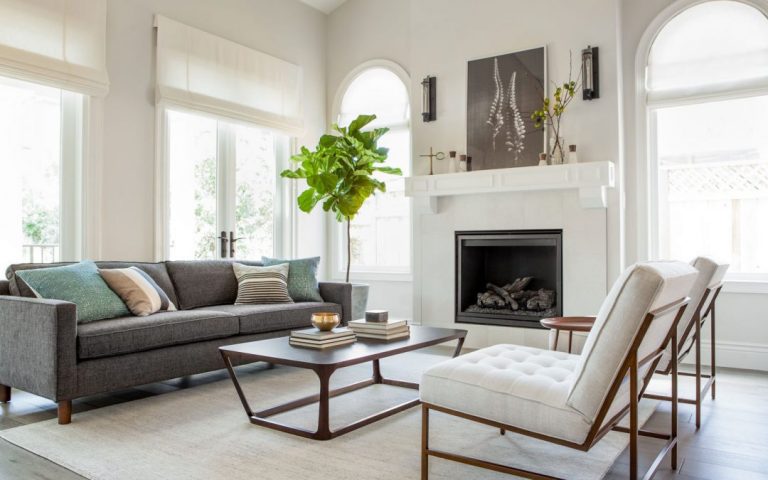When it comes to home decor, space is one of the most crucial elements to consider. Whether you’re working with a spacious loft or a cozy studio apartment, how you utilize and perceive your space can make or break the overall aesthetic and functionality of your home. The goal is to create an environment that feels open, comfortable, and organized—no matter the size of the space. To help you make the most of your home, here are the top 10 space tips that will enhance your decor, maximize your room’s potential, and transform your living areas into functional and beautiful sanctuaries.
1. Embrace Light Colors for an Open Feel
One of the simplest and most effective ways to make a room feel larger and more open is by using light colors for your walls, ceilings, and even large furniture pieces. Shades of white, cream, pale gray, and soft pastels reflect light and give the illusion of more space. These colors not only brighten a room but also create a sense of calm and openness, making smaller spaces feel more expansive. For rooms with limited natural light, light-colored walls and furniture can help balance out the lack of sunlight, giving your home a fresh, airy vibe.
You can also complement light walls with darker accents in your furniture or decor for contrast. The key is to maintain a harmonious balance between light and dark elements to prevent the space from feeling too flat or overly monochromatic.
2. Use Mirrors to Expand the Room Visually
Mirrors are one of the oldest tricks in the book when it comes to enhancing space. Strategically placed mirrors can reflect light, making a room appear larger and brighter. They also create a sense of depth, drawing the eye across the room and amplifying the feeling of openness. A large mirror placed across from a window, for example, can double the amount of natural light in the room while giving it a sense of greater depth.
Choose mirrors that match the style of your decor. Framed mirrors with clean lines work well in minimalist spaces, while ornate mirrors may be ideal for more traditional settings. The placement of mirrors is key: avoid crowding them in one area, and experiment with reflective surfaces in different corners of the room for a more dynamic effect.
3. Opt for Multi-Functional Furniture
When space is at a premium, multi-functional furniture is your best friend. Pieces that serve multiple purposes not only help save valuable square footage but also make the room more adaptable to your needs. For instance, a sofa that transforms into a bed is ideal for a guest room or a small living area, while an ottoman with hidden storage can double as both a seating option and a place to stow away blankets or remote controls.
Foldable tables, extendable dining sets, and modular shelving units are also excellent choices when you’re working with limited space. Invest in quality, versatile furniture that can easily be moved or adapted to suit different activities, ensuring your space remains fluid and functional.
4. Incorporate Vertical Storage
When floor space is limited, look upward. Vertical storage is a great way to make the most of your walls while keeping the floor clear and organized. Tall bookshelves, wall-mounted cabinets, floating shelves, and overhead storage can help store items without taking up valuable floor space. Vertical storage also draws the eye upward, making the room feel taller and more open.
Maximizing vertical space works particularly well in smaller rooms, such as bathrooms or kitchens, where cabinet and counter space may be scarce. However, be mindful not to overcrowd walls with too much storage, as this can make the room feel cluttered.
5. Keep Pathways Clear and Uncluttered
No matter how beautifully you decorate your home, if the space is obstructed by cluttered pathways, it will always feel cramped. A room that is easy to navigate gives the impression of greater space and allows for smooth movement throughout the space. Be intentional about how you place furniture and avoid overcrowding areas that need to remain open, such as entryways, hallways, or spaces between furniture pieces.
A simple trick is to create clear, unobstructed walking paths, particularly in high-traffic areas. Ensure that there’s enough room between chairs, tables, and other furniture for easy access, and avoid placing large furniture pieces in the middle of the room. By keeping key areas open, you will create a feeling of spaciousness, allowing each room to breathe.
6. Use Rugs to Define Zones
In an open-plan living space, rugs are an excellent way to define different zones or functions within a room. A large rug can anchor the furniture in a living area, while smaller rugs can help delineate different spaces within a room. For example, in a studio apartment, use rugs to create distinct areas for sleeping, dining, and lounging, ensuring each part of the room serves a specific purpose.
Rugs can also be used to add texture and color to a space without overwhelming it. Choose neutral or complementary shades for a subtle, calming effect, or add bold patterns for a striking focal point. Make sure the rugs are appropriately sized to avoid cutting off the flow between different areas of the room.
7. Choose Furniture with Open Legs
Heavy, bulky furniture can weigh down a room, making it feel crowded and confined. To avoid this, choose pieces with open legs or a light frame, as they create a sense of airiness and openness. Furniture that is elevated off the ground—such as sofas with slim legs or coffee tables with an open base—helps the eye move freely through the room, enhancing the perception of space.
The transparency provided by open-legged furniture allows for more visual continuity between the floor and the rest of the room, making the space feel more expansive. Opt for pieces that are functional yet visually light to maintain an uncluttered, streamlined look.
8. Stick to a Cohesive Color Scheme
A cohesive color scheme ties the room together and can make even a small space feel organized and intentional. While it’s tempting to mix multiple colors and patterns, a more restrained palette will help create a sense of harmony and flow. Sticking to a few key shades for walls, furniture, and accessories helps ensure that the room feels balanced and open rather than chaotic.
Neutral tones like whites, grays, and beiges serve as excellent foundation colors, while adding in a few accent colors through pillows, artwork, or throws can introduce personality without overwhelming the space. If you’re feeling adventurous, you can experiment with bold color combinations, but aim for consistency to maintain a cohesive atmosphere.
9. Utilize Custom or Built-In Furniture
In smaller spaces, custom or built-in furniture solutions can help you maximize every inch of available space. Custom shelving units, cabinetry, or even beds with built-in drawers can be tailored to your room’s unique dimensions, providing much-needed storage without taking up additional floor space. For instance, a built-in window seat can offer both extra seating and storage, while custom closets can help optimize storage in bedrooms or hallways.
By designing furniture that is made specifically for your space, you can ensure that no area is left underutilized, while maintaining a polished, cohesive look.
10. Adopt a Minimalist Approach
Finally, adopting a minimalist approach to home decor is one of the most effective ways to make your space feel larger and more organized. By reducing the number of items in a room, you allow the remaining pieces to breathe, ensuring that each one has a purpose and enhances the overall design. This approach encourages you to choose fewer but more meaningful pieces—whether it’s furniture, artwork, or decorative objects.
Minimalism helps to clear away unnecessary distractions, allowing you to focus on what truly matters in your space. This doesn’t mean your home has to be stark or devoid of personality. Rather, it’s about being intentional with your choices, curating a space that is functional, beautiful, and free from clutter.
Conclusion
Better space management in home decor is all about maximizing the potential of your home, no matter its size. From using light colors and mirrors to incorporating multi-functional furniture and vertical storage, each of these tips can help you create a more organized, spacious, and visually appealing environment. By making mindful design decisions and focusing on functionality, you can ensure that every inch of your home is utilized effectively, transforming it into a peaceful and well-curated sanctuary. Remember, space is not just about the size of a room—it’s about how you use it to create balance and beauty.

